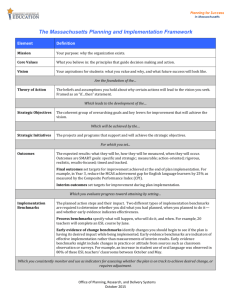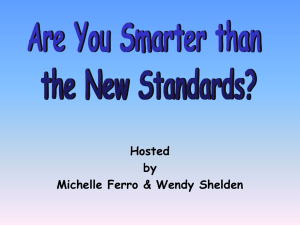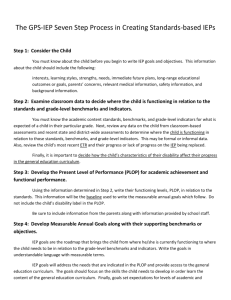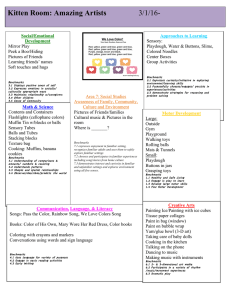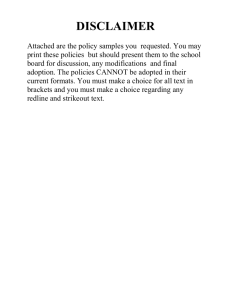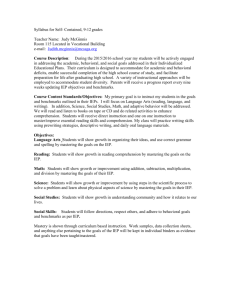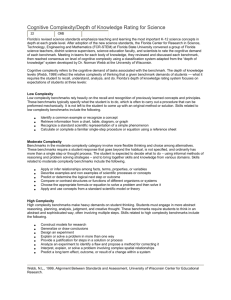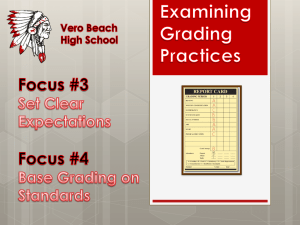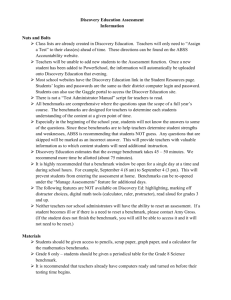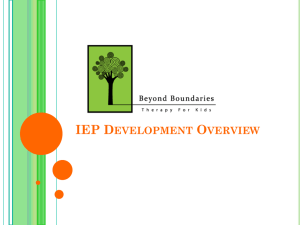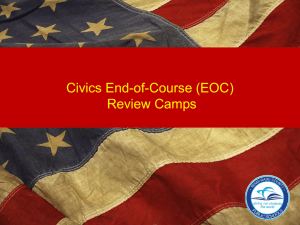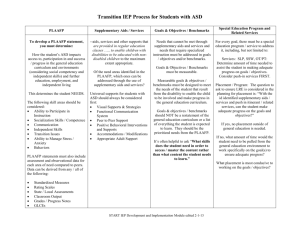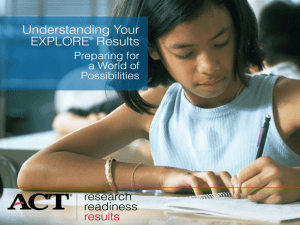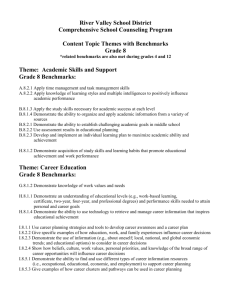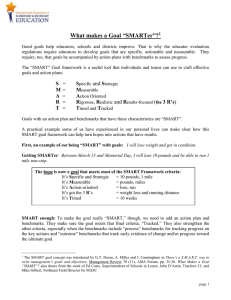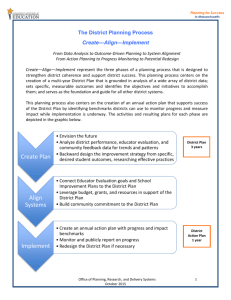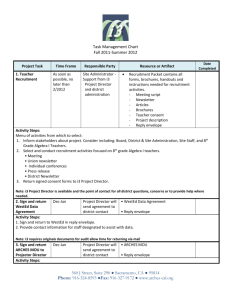12 goal-writing considerations for IEPs.
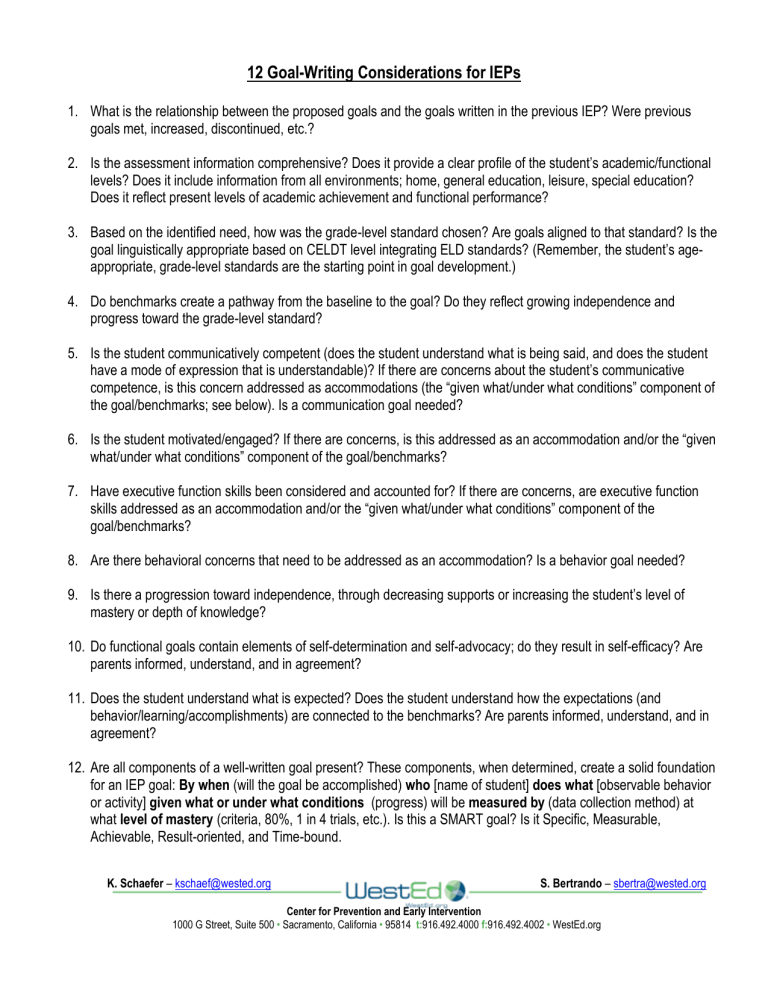
12 Goal-Writing Considerations for IEPs
1.
What is the relationship between the proposed goals and the goals written in the previous IEP? Were previous goals met, increased, discontinued, etc.?
2.
Is the assessment information comprehensive? Does it provide a clear profile of the student’s academic/functional levels? Does it include information from all environments; home, general education, leisure, special education?
Does it reflect present levels of academic achievement and functional performance?
3.
Based on the identified need, how was the grade-level standard chosen? Are goals aligned to that standard? Is the goal linguistically appropriate based on CELDT level integrating ELD standards? (Remember, the student’s ageappropriate, grade-level standards are the starting point in goal development.)
4.
Do benchmarks create a pathway from the baseline to the goal? Do they reflect growing independence and progress toward the grade-level standard?
5.
Is the student communicatively competent (does the student understand what is being said, and does the student have a mode of expression that is understandable)? If there are concerns about the student’s communicative competence, is this concern addressed as accommodations (the “given what/under what conditions” component of the goal/benchmarks; see below). Is a communication goal needed?
6.
Is the student motivated/engaged? If there are concerns, is this addressed as an accommodation and/or the “given what/under what conditions” component of the goal/benchmarks?
7.
Have executive function skills been considered and accounted for? If there are concerns, are executive function skills addressed as an accommodation and/or the “given what/under what conditions” component of the goal/benchmarks?
8.
Are there behavioral concerns that need to be addressed as an accommodation? Is a behavior goal needed?
9.
Is there a progression toward independence, through decreasing supports or increasing the student’s level of mastery or depth of knowledge?
10.
Do functional goals contain elements of self-determination and self-advocacy; do they result in self-efficacy? Are parents informed, understand, and in agreement?
11.
Does the student understand what is expected? Does the student understand how the expectations (and behavior/learning/accomplishments) are connected to the benchmarks? Are parents informed, understand, and in agreement?
12.
Are all components of a well-written goal present? These components, when determined, create a solid foundation for an IEP goal: By when (will the goal be accomplished) who [name of student] does what [observable behavior or activity] given what or under what conditions (progress) will be measured by (data collection method) at what level of mastery (criteria, 80%, 1 in 4 trials, etc.). Is this a SMART goal? Is it Specific, Measurable,
Achievable, Result-oriented, and Time-bound.
K. Schaefer – kschaef@wested.org
S. Bertrando – sbertra@wested.org
Center for Prevention and Early Intervention
1000 G Street, Suite 500 • Sacramento, California • 95814 t: 916.492.4000 f: 916.492.4002 • WestEd.org
